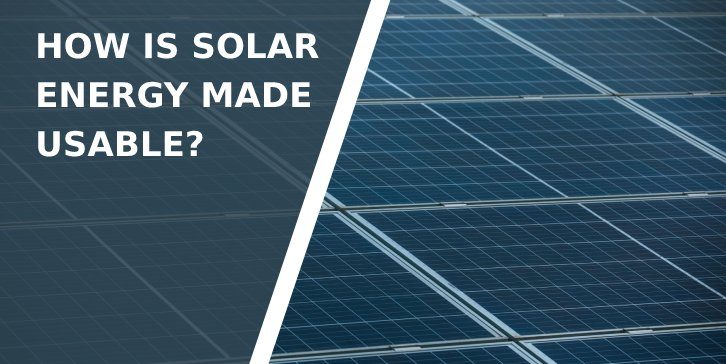Solar power has been growing in popularity for decades and shows no signs of slowing. Today, more than 3 percent of all electricity produced in the United States comes from solar, and the average cost of solar installation has dropped nearly 70 percent since 2014. If you are considering solar panel installation, you may be wondering, “How is solar energy made usable?”
This is a complex process that involves several steps to turn the rays of the sun into electricity that can power your home. Once you understand how solar power works, you will have a better appreciation for this modern miracle. Keep reading to find out more.
What Is Solar Energy?
The sun burns at about 27 million degrees Fahrenheit at its core. It is constantly emitting large amounts of energy that travel to Earth in the form of photons or light particles.
Human beings have been harnessing the power of the sun for centuries. There is evidence that people were reflecting light to start fires as long ago as the 7th century BCE.
In 1839, French physicist Edmond Becquerel was the first person to develop the “photovoltaic method” used in solar panels today. He was able to produce electricity by illuminating an electrode using different types of light. The first photovoltaic (PV) cell was developed by researchers at Bell Labs using silicon in 1954.
What Are Solar Panels?
There are two main types of solar panels: monocrystalline and polycrystalline. Monocrystalline panels have a single silicon crystal. Polycrystalline ones are made of man fragments of silicon.
Monocrystalline panels are more efficient than polycrystalline ones since they provide more room for electrons to move around and create usable energy. For this reason, they are usually more expensive. Most solar companies, like with Blue Raven, offer options depending on your home’s layout and your budget.
Silicon is a semiconductor. It is implanted in a metal panel on the equipment and covered by a glass casing, which protects the panels. It also can have an anti-reflective coating that can assist in light absorption.
There also is an insulating layer, which guards against heat dissipation and humidity inside the panel. This is important because such changes can lead to decreased efficiency.
How Is Solar Energy Made Usable?
Now the answer is, “How is solar energy made usable?” First, there are usually two layers of silicon that are treated to create an electric field between them.
When the photons strike the solar panels’ layers of silicon, the electric field causes electrons to break away from the silicon atoms. This charge creates an electric current, which the solar panel wiring captures.
Then, metal plates on the side of each solar cell collect the electrons and transfer them to a solar inverter. The inverter transforms the direct current of electricity into an alternating current. This is the type of electricity that you can use to operate electrical appliances in your home.
Get More Solar Energy Tips
Now that you have an answer to “How is solar energy made usable?” you can have a better appreciation of the very complex system you can use to heat, cool, and illuminate your home.
We hope you found this information on solar energy useful. If so, be sure to check out some of our other posts on everything from technology to business and many other topics.

